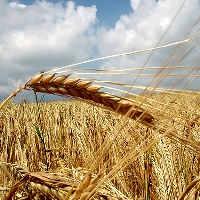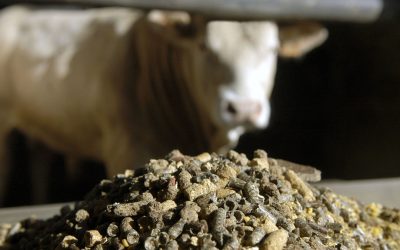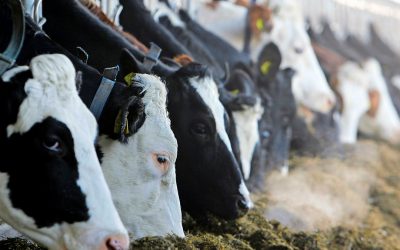Enough grain in Europe

The latest report from the European Commission on the prospects for agricultural markets and incomes suggests an increase in returns to growers in the medium term and rising production. In 2010 production is projected to reach 293.6 million tonnes, rising to 305 million tonnes by 2014.
Consumption will also grow, but at a more modest rate, and is expected to
reach 272.9 million tonnes in 2010 and over 285 million tonnes in 2014.
reach 272.9 million tonnes in 2010 and over 285 million tonnes in 2014.
On current trends the EU will actually have end stocks in 2014 of 56
million tonnes, compared with the 40.4 million tonnes last year.
million tonnes, compared with the 40.4 million tonnes last year.
There are two main reasons behind the prospects of rising production.
The reforms of the Common Agricultural Policy made an ending of intervention
buying for maize. And the ending of set-aside – the measure through which
farmers were obliged to take land out of cultivation to avoid surpluses having
to be placed in store at taxpayers’ expense – has made more land available for
cereal growing.
The reforms of the Common Agricultural Policy made an ending of intervention
buying for maize. And the ending of set-aside – the measure through which
farmers were obliged to take land out of cultivation to avoid surpluses having
to be placed in store at taxpayers’ expense – has made more land available for
cereal growing.
Production forecast
For 2008 Paris-based Strategie
Grains is forecasting that wheat production in the EU will be in the region of
128 million tonnes, which is well up on the 111.6 million tonnes of last
year.
For 2008 Paris-based Strategie
Grains is forecasting that wheat production in the EU will be in the region of
128 million tonnes, which is well up on the 111.6 million tonnes of last
year.
Consumption of wheat is expected to be about 118 million tonnes, up on
last year as livestock farmers switch from using maize.
last year as livestock farmers switch from using maize.
Barley production is expected to show a modest increase of 900,000
tonnes to 61.54 million tonnes in the EU.
tonnes to 61.54 million tonnes in the EU.
Last year cereal production in the EU reached 256 million tonnes, but
consumption exceeded this production with ten million tonnes. The gap was filled
by imports.
consumption exceeded this production with ten million tonnes. The gap was filled
by imports.
Of total consumption of 265.6 million tonnes some 165.2 million tonnes
were used in animal feed.
were used in animal feed.
Growth in the East
Production in the newer EU
member states is expected to rise considerably as technical efficiency improves
and farm sizes become larger. The land in parts of Hungary and Poland is ideally
suited to growing crops and as newer varieties are adopted yields will
rise.
Production in the newer EU
member states is expected to rise considerably as technical efficiency improves
and farm sizes become larger. The land in parts of Hungary and Poland is ideally
suited to growing crops and as newer varieties are adopted yields will
rise.
High costs
Although more land will be available,
the costs for farmers are rising. Fertilisers are expensive and the scarcity of
phosphorous is really becoming a worldwide problem.
Although more land will be available,
the costs for farmers are rising. Fertilisers are expensive and the scarcity of
phosphorous is really becoming a worldwide problem.
Some of the major fertiliser manufacturing countries, notably Russia
and China, have placed restrictions on exports and this is having a major impact
on the market.
and China, have placed restrictions on exports and this is having a major impact
on the market.











